もつれのパターン / Patterns of Entanglement
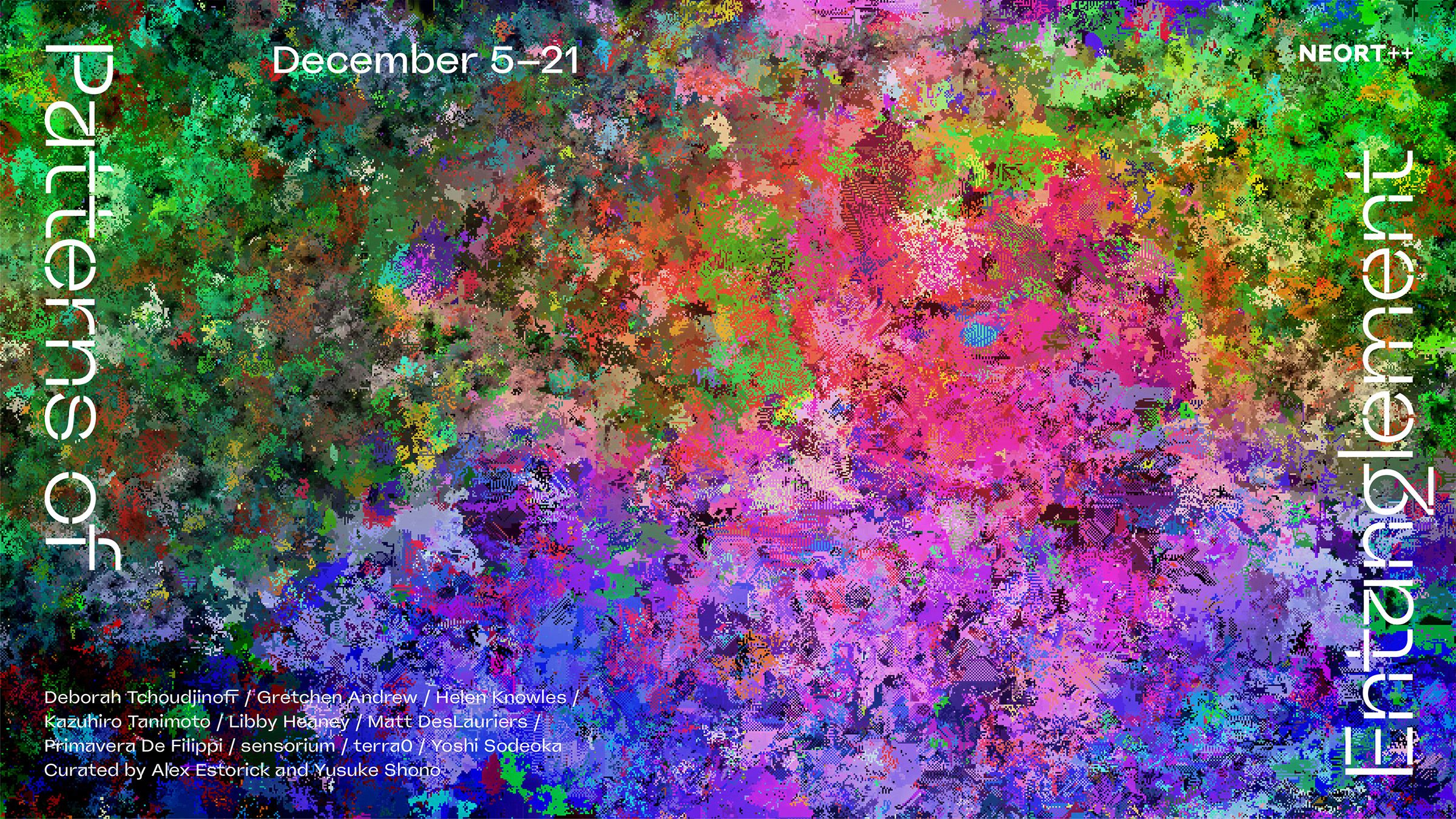
NEORT++は、2025年を締めくくる展覧会「もつれのパターン / Patterns of Entanglement」を開催します。
人間中心主義を超え、デジタルと自然のエコシステムが重なり合う場へ。Alex Estorick氏と庄野祐輔氏の共同キュレーションのもと、10組のアーティストが、人間、非人間、そして自然が織りなす新たな関係性のパターンを提示します。
展覧会概要
人新世において、人間は否応なく、非人間のエコシステムとの相互接続を理解することを迫られています。有機物とデジタルが融合し、人間が炭素とシリコンのハイブリッドへと変容する現在、アーティストたちがこの新たに重層化された存在を読み解く手がかりを提供します。
本展では、「メディアエコロジー」という概念を通じて、世界を倫理的・生態学的・社会的・政治的なプロセスが絶え間なく再生・変容・伝達される場として捉えます。参加アーティストたちは、人工的プロセスと生物、人間と非人間の間でメッセージを交換しながら、新自由主義的「現実」を別のエコロジーへと編み替える道筋を示します。
「もつれのパターン/Patterns of Entanglement」とは、個体からエコシステムまで、様々なスケールにおける接続性、相互作用、共生のパターンを読み解く試みです。量子もつれから森林のトークン化まで、10組のアーティストが持つユニークなリテラシーを通じて、常に異なる形で絡み合っている人間と非人間の関係性——を可視化し、テクノロジーや自然を美化することなく、人間中心主義を超えた別の現実への道を探ります。
会場協力:CON_
Artists

Kazuhiro Tanimoto
Kazuhiro Tanimoto is a generative artist and chemist involved in material research and development. He uses the unique computational capabilities of computers to develop expressions that integrate physical and digital material, permanence and transience, and science and art. With a special focus on audio-visual expressions created with code, he depicts themes related to technology, nature, and the human mind. He has a PhD in engineering from Kansai University, and regards scientific research and art-making as intimately related activities. He has exhibited globally, including at the VA HUB, Taipei; NFT Rio, Rio de Janeiro; Art Blocks Gallery, Marfa; Tokyo International Forum, Tokyo; Arizona State University; Arroz Estúdios, Lisbon; and as part of The 21st Japan Media Arts Festival, Tokyo.
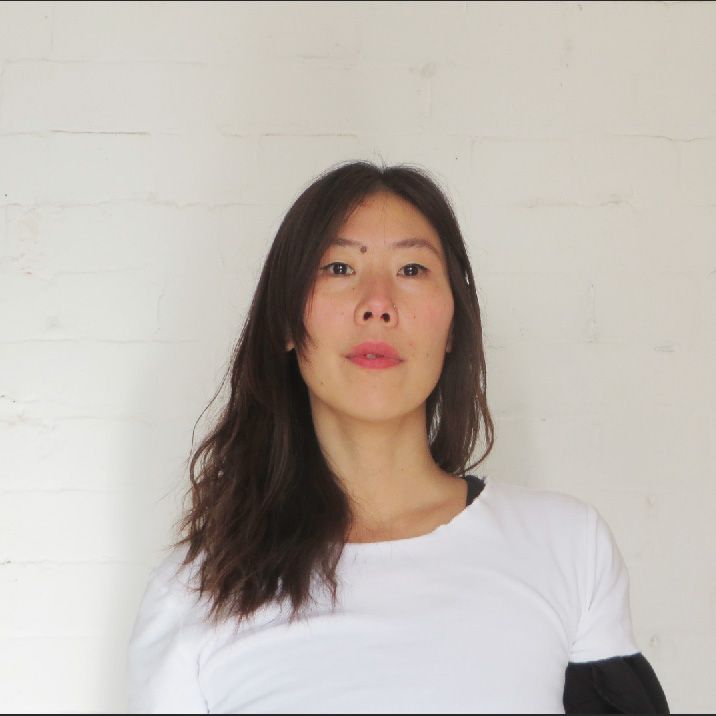
Deborah Tchoudjinoff
DEBORAH TCHOUDJINOFF works across moving image and sculpture; often presented in the form of installations. She is attentive to the dialogue between material and digital approaches in the production of her work. For example a sculptural work might make its way into a 3D model in a digital form, or vice versa - a digital 3D model is reconstructed as a sculptural piece. She uses this approach to explore methods of world-building and fiction, the aesthetics of the work often emerging through this process. Deborah is inspired by visual references relating to the otherworldly, the spiritual, the imaginary. Often beginning with a conceptual framework, she considers what the form is through the process of material and visual experimentations. Deborah has worked with metal, wood, or found material to produce static or kinetic sculptures. She has also worked with various digital methods for her moving image. Her practice is underpinned by her curiosity of the role of technology in temporality and the imaginary. Deborah studied at the Royal College of Art (2016) and is currently Lecturer in Emerging Technology at London College of Communication, UAL, London. She has exhibited work at the Lisbon Architecture Triennale 6th Edition (2022), at the Victoria & Albert Museum (2019), Tate Exchange (2019), as part of Five Heads (Tavan Tolgoi) Art, Anthropology, and Mongol Futurism (2018) among other group shows. She has been a finalist for the Youfab Global Creative Awards (2020) and a longlisted artist for the Aesthetica Art Prize (2024).
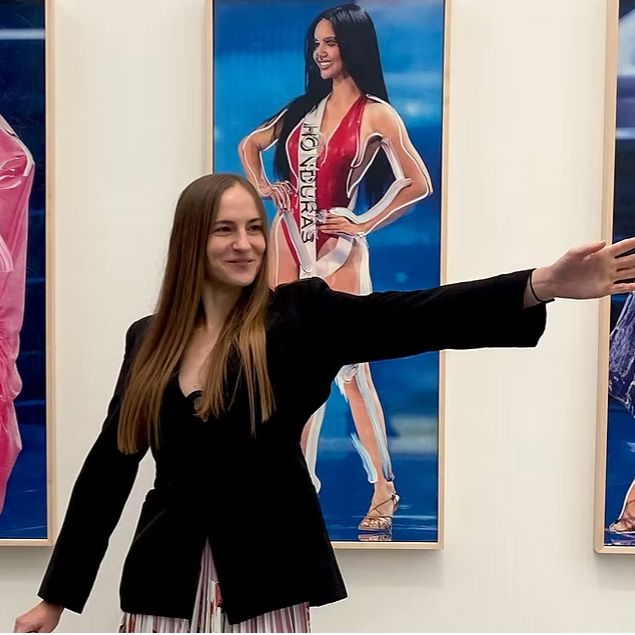
Gretchen Andrew
Gretchen Andrew is a painter and hacker who manipulates systems of power through art and technology. Her unique practice stems from her background at Google and a formal painting apprenticeship with Billy Childish. Known for merging traditional oil painting with strategic information systems and emerging technologies, she works across mediums to interrogate and manipulate the structures that shape beauty, influence, and authority in the digital age. Gretchen Facetune Portraits series explore how aesthetics, AI, and algorithmic visibility collide. She first gained recognition for her internet interventions and conceptual use of search engine manipulation, but it is her unique fusion of classical painting technique with digital subversion that has earned critical and institutional acclaim. In 2025, The Whitney Museum of American Art acquired two of her Facetune Portraits into its permanent collection, with unanimous and enthusiastic support from the museum’s committee. Her work has been the subject of solo exhibitions at Francisco Carolinum (Linz), the Monterey Museum of Art, Annka Kultys Gallery (London), and was a featured exhibition at Berlin Art Week and Paris Photo. She has been an artist-in-residence at The National Gallery (London), Gazelli Art House, and the 18th Street Arts Center, with her work supported by grants from the Knight Foundation and the National Endowment for the Arts (NEA). As a respected thought leader, she has delivered talks and lectures at institutions including the Tate Modern, the University of Chicago, and the V&A Museum. Her work is held in the permanent collections of the Whitney Museum, 21c Museum Hotels, and the Monterey Museum of Art, among others, and has received critical attention from publications like Artforum, Vogue, Flash Art, and CNN.

Primavera De Filippi
Primavera De Filippi is an artist and legal scholar at Harvard University, exploring the intersection between art, law and technology, focusing specifically on the legal and political implications of blockchain technology and AI. Her artistic practice instantiates the key findings of her research in the physical world, creating blockchain-based lifeforms that evolve and reproduce themselves as people feed them with cryptocurrencies. Her works have been exhibited in various museums, galleries and art fairs around the world including Ars Electronica and Francisco Carolinum (Linz, Austria), HEK Museum of Digital Arts (Basel), Kate Vass Gallery (Zurich), Furtherfield Gallery, Gazelli Art House, and Kinetica Art Fair (UK), Centre Pompidou, Grand Palais, Gaité Lyrique, Le Cent Quatre and Artverse (Paris, France), Palazzo Cipolla and Biennale di Venezia (Italy), Fort Mason Center For Arts & Culture (San Francisco), as well as international art fairs such as Art Dubai, Kinetica Art Fair, Burning Man (Nevada), Fusion Festival (Germany) and Synesthesia (Portugal), and online galleries like Feral File.

Matt DesLauriers
Matt DesLauriers is a Canadian artist now living in London, whose work focuses on generative art, algorithms, and emergent systems. His generative art is part of the permanent collection of the Los Angeles County Museum of Art, and his work has been exhibited internationally, including at Somerset House, Paris Photo, MoCA Taipei, and Art Basel. He’s active in the open source community, and often teaches workshops and classes; including tutoring a Master’s of Architecture creative coding module at UCL Bartlett.
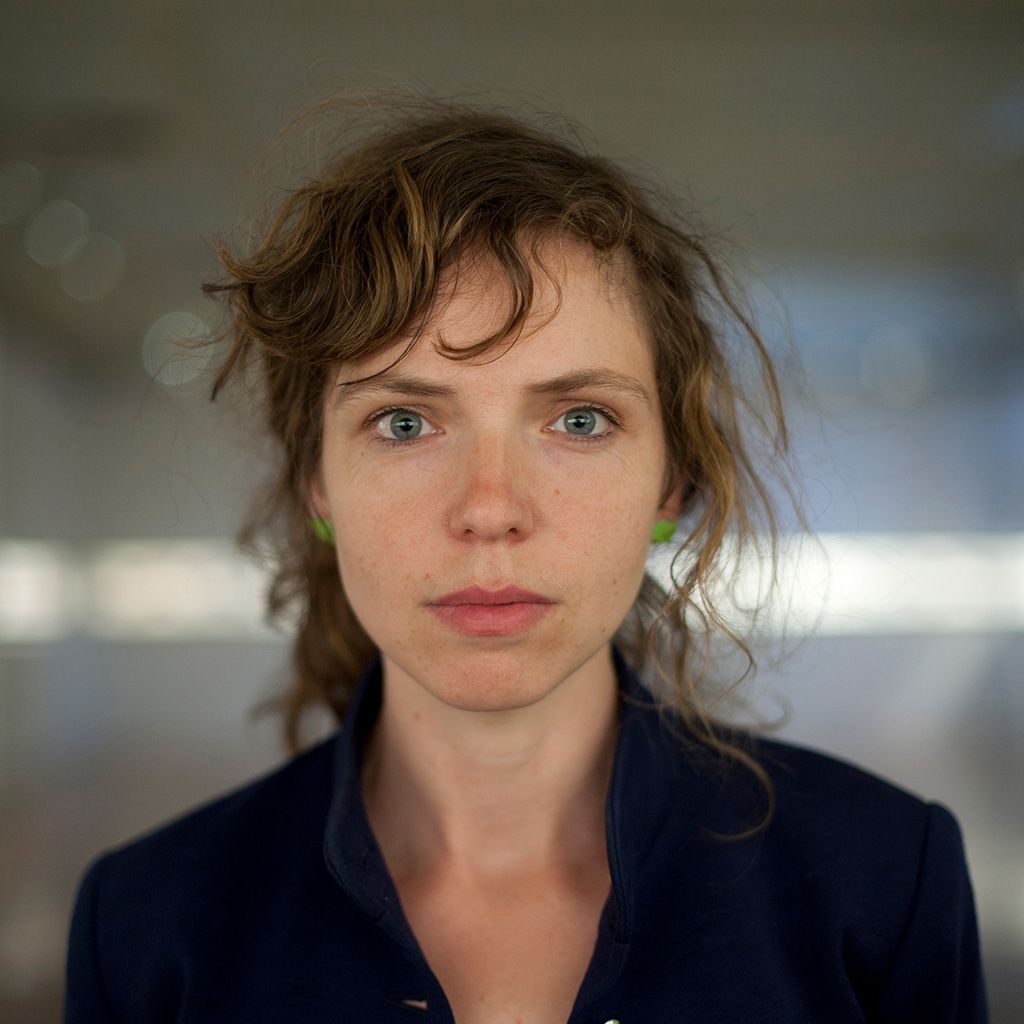
Helen Knowles
Helen Knowles (b. 1975) is an artist working with expanded forms of moving image. Her practice examines the intersection of immateriality and life, focusing on responsibility, autonomy, and ethics in relation to technology, AI, and the non-human. Knowles explores the digital world through a planetary lens. Working collaboratively with indigenous communities, medics, scientists, lawyers, crypto specialists, and inmates, among others, her use of performance and film focuses on the relational and generative qualities of discourse. Knowles is also the curator of the Birth Rites Collection currently housed in the University of Kent. Recent shows include; Gallery North, Newcastle, (2025) Science Gallery, London, Hercules Road Gallery , London, Hyundai Motor Studio, Beijing (2023), Alberta University of the Arts, Leuphana University (2022), Hannover project, ‘What Will Be’ Kunsthaus Graz, ‘Virtual Station’, Seoul, (2021) arebyte Gallery, London, Ars Electronica, Linz (2020), ‘Future and the Arts: AI, Robotics, Cities, Life - How Humanity Will Live Tomorrow’ The Mori Art Museum, Tokyo, NEMO festival, 104 Paris, The Ministry of Justice and Consumer Affairs, Berlin, ‘Artistic intelligence’ Hannover Kunstverein (2019) ‘Impakt Festival, ‘Los Algorithmos Suaves’, Centro del Carme, Valenica, Potsdam Film Museum (2018) ‘Zero Recoil Damage’,FolkestoneTriennial, ‘OpenCodes’, ZKM Karlsruhe, Germany, ‘Codex’ D21, Leipzig, The Trial of Superdebthunterbot, Zabludowicz Collection, London (2017) Gender Generation, Royal College of Art, Between the Lines, GRAD,London, Under Construction,Moscow (2016), Collaborate, Oriel Sycarth, (2015), PrivateView:PublicBirth, GV Art, London (2013), Goldsmiths Women’s Library (2013), Life Is Beautiful, Galerie Deadfly, Berlin (2012); Digital Romantics, Dean Clough Gallery (2012) and Walls are Talking, Whitworth Art Gallery (2010). Her work is held in private and public collections including, Kunsthaus Graz, The Magistrates Organisaition, The Whitworth Art Gallery, Gallery Oldham, Tate Library and Archive, The National Art Library, Joan Flasch Artist Book Collection, Museum of Motherhood, NY, Birth Rites Collection and MMU Special Collection. Residencies include; Trelex Residency, Switzerland (2019), Fault Lines, Future Everything (2017-2019), HMP Altcourse, Liverpool, (2017) Moscow ICA, (2015) Santa Fe Arts Institute, New Mexico (2013 Jodrell Bank Science Centre and Arboretum (1999-2001). A recipient of awards from Arts Council England and The Amateurs Trust, she was awarded an honorary mention at Ars Electronica 2020 and the Neo Art Prize, Great Art Prize for two works form the Youtube Portraits Series (2012). In 2025 Knowles was nominated for the Jarman Moving Image Prize.

terra0
Across their various projects, the art collective terra0 explores how economy and ecology intertwine. Since their inception in 2015, terra0 has explored how ecosystems can become economic agents and engages in questions of collective ownership. Their first work, terra0 whitepaper (2016), proposed a self-utilizing forest which, with the help of sensors and smart contracts, sells logging licenses and ultimately accumulates capital. Later works have iterated and reflected back on the claims set forth in the whitepaper, continuing to center on emerging technologies' potential to support new forms of ownership, and the different conceptions of agency they may thus entail. Throughout their practice today, terra0 raises questions around autonomy and agency in culture and law; novel distributions of ownership; and regard for the natural world within and beyond market capitalism.
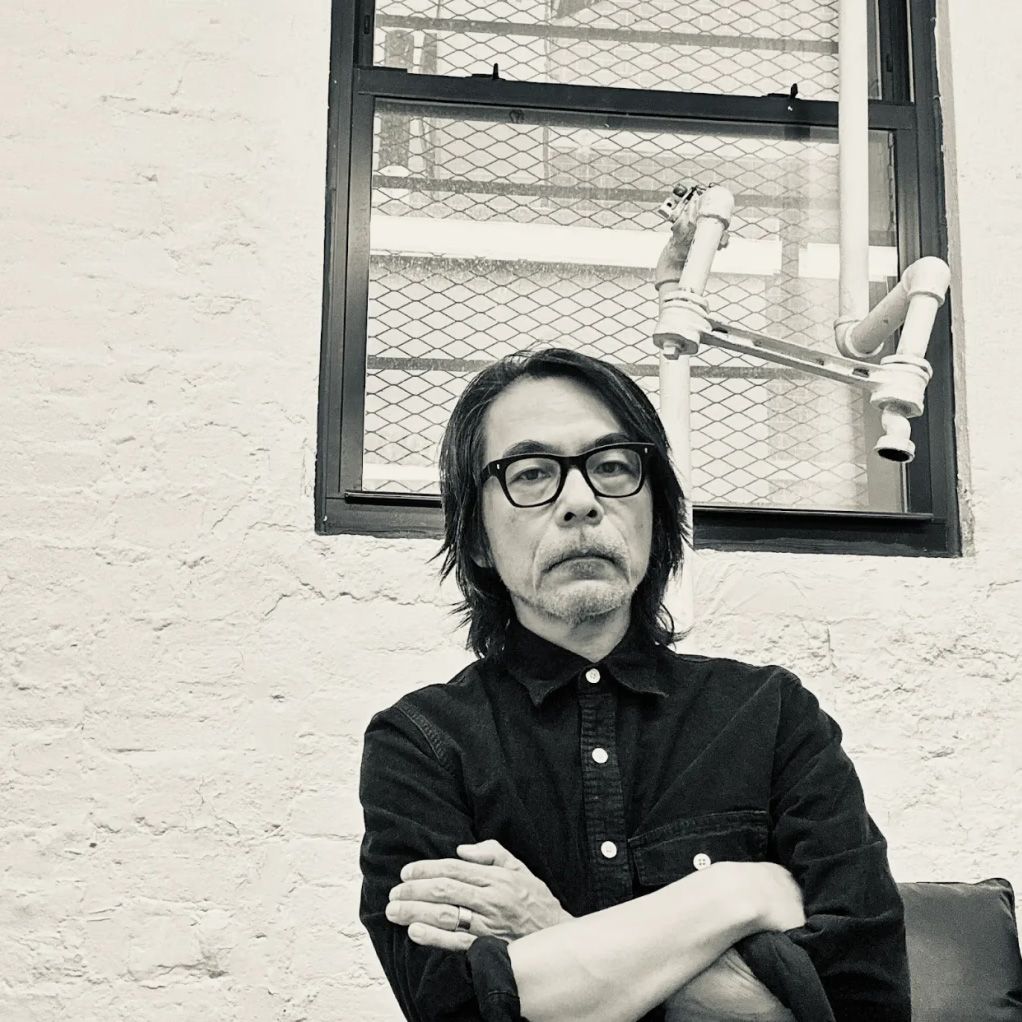
Yoshi Sodeoka
Yoshi Sodeoka is an artist working across video, print, and digital media, with a practice that includes immersive video installation. His work explores the boundaries between perception, abstraction, and systems logic—drawing from experimental music culture and the structural language of math and digital technology.
Through generative processes and layered time-based compositions, Sodeoka creates visual experiences that shift between intensity and calm, chaos and order. His aesthetic often incorporates diagrammatic overlays—lines, vectors, symbolic forms—that evoke how machines attempt to read the world, while embracing ambiguity and contradiction. The result is a visual language that feels both engineered and intuitive.
His projects span fine art, editorial, and music contexts. He has collaborated with musicians such as Metallica, Psychic TV, Tame Impala, Oneohtrix Point Never, Beck, The Presets, and Max Cooper. His illustrations have appeared in The New York Times, Wired, The Atlantic, and MIT Technology Review. He has also been commissioned as an artist by brands such as Apple, Samsung, Adidas, and Nike.
Sodeoka’s work has been exhibited internationally at venues including the Centre Pompidou, Tate Britain, the Cleveland Museum of Art, Deitch Projects, La Gaîté Lyrique, the Museum of the Moving Image, the Baltimore Museum of Art, and Laforet Museum Harajuku. His work is in the permanent collections of the Whitney Museum of American Art, the Museum of the Moving Image, and SFMOMA.
Originally from Yokohama, Japan, he moved to New York in the 1990s to study at Pratt Institute and has been part of the city’s art scene since.

sensorium
Sensorium is a project that was launched online on January 1, 1996, as the Japan Zone Theme Pavilion of the Internet 1996 World Exposition. After the exhibition period ended, it moved its platform to sensorium.org and continued its activities, though the project has since concluded. Its guiding concept was “expanding the potential of the Internet as a neural network enveloping the entire Earth and creating mechanisms for sensing the living world.” The members included Shinichi Takemura, Yoshiaki Nishimura, Ichiro Higashiizumi, Takuya Shimada and Koichiro Eto, among others, forming a diverse group of cultural anthropologists, designers, programmers, and musicians. Each project was developed by small, cross-disciplinary teams assembled according to the needs of the work. In 1997, Sensorium received the Golden Nica in the .net category at the Prix Ars Electronica.